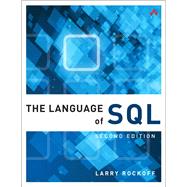- Use SQL to retrieve data from relational databases
- Apply functions and calculations to data
- Group and summarize data in a variety of useful ways
- Use complex logic to retrieve only the data you need
- Update data and create new tables
- Design relational databases so that data retrieval is easy and intuitive
- Use spreadsheets to transform your data into meaningful displays
- Retrieve data from multiple tables via joins, subqueries, views, and set logic
- Create, modify, and execute stored procedures
- Install Microsoft SQL Server, MySQL, or Oracle








